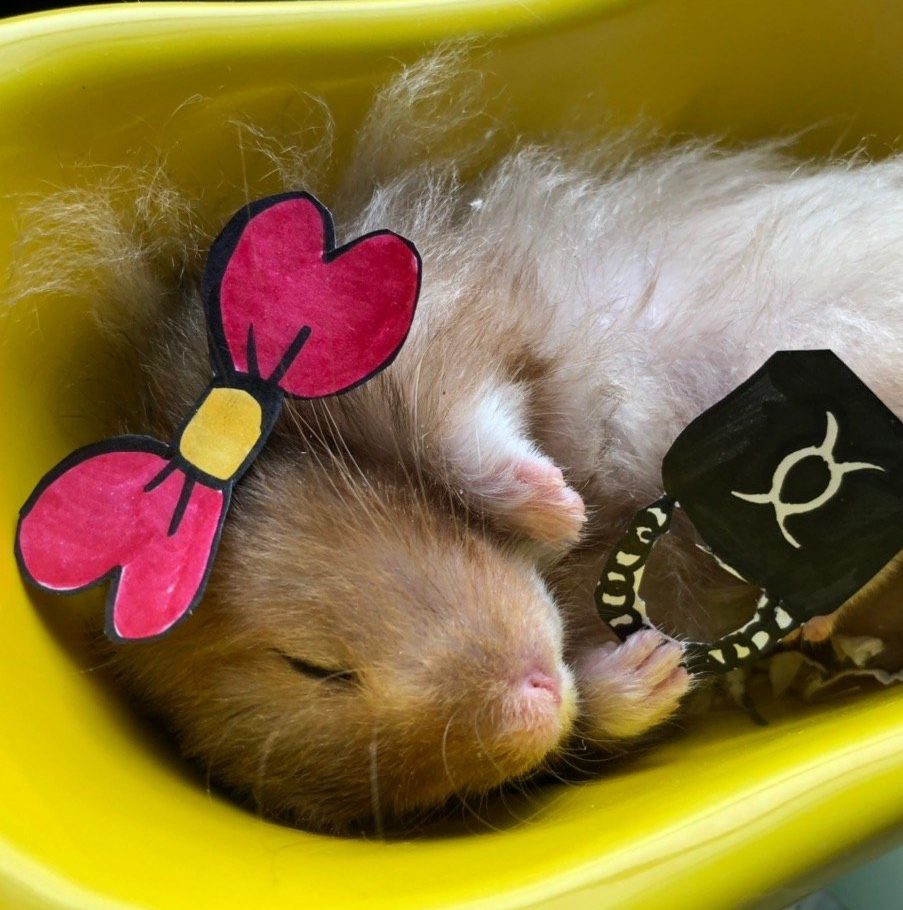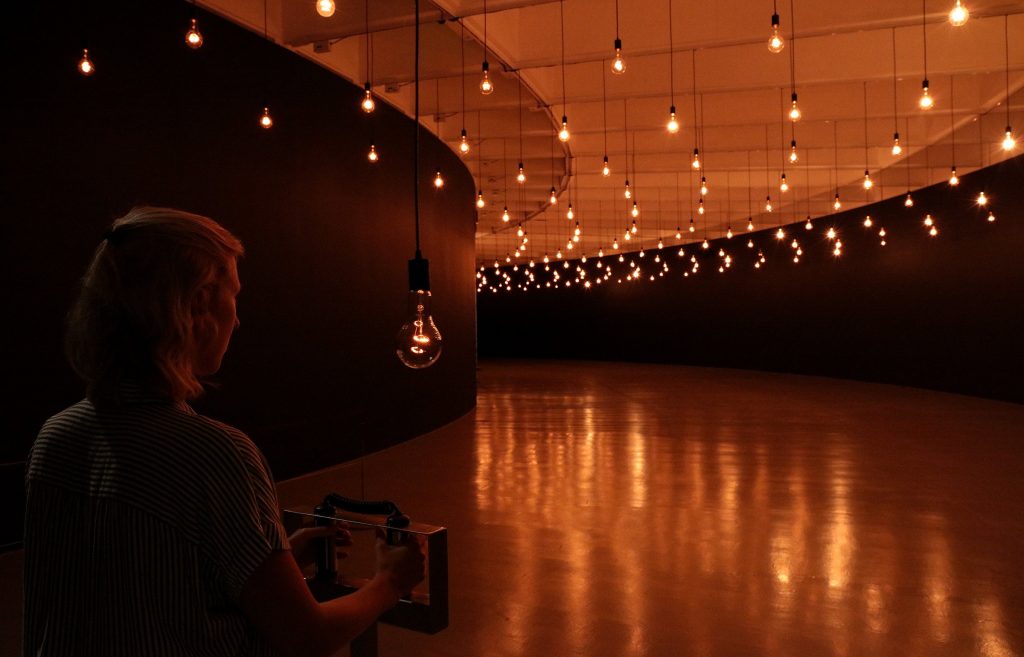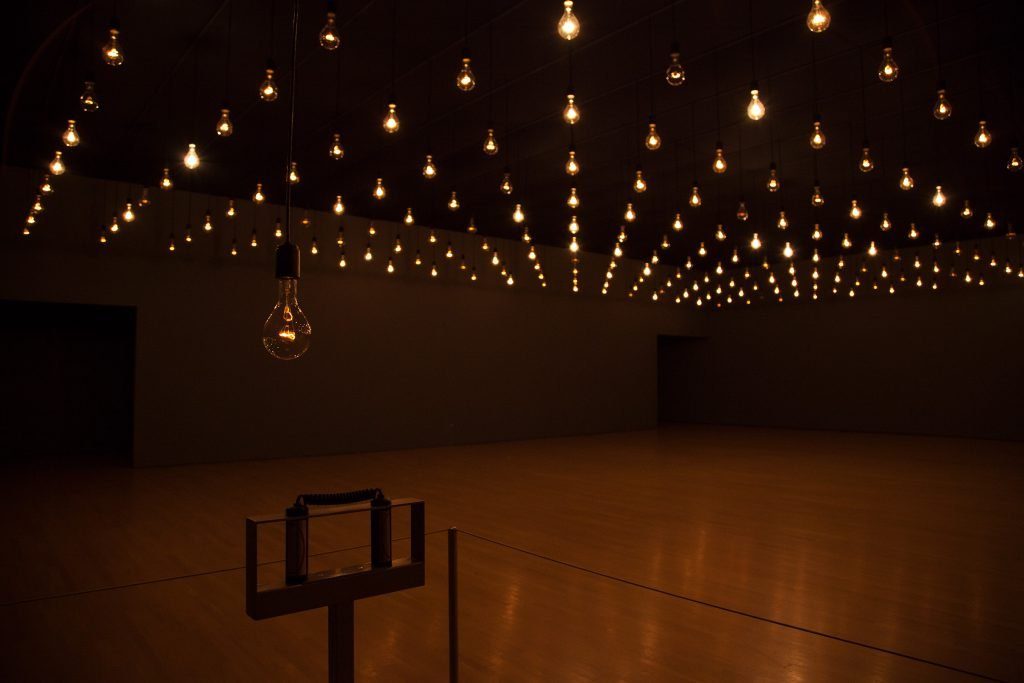

Wayfinding
At the very first touchpoint of the overall gallery experience, I was intrigued by the layout of the Future Worlds space as it was designed for visitors to immerse in different levels of intensity and wonder as they progress through the different rooms. Even in the dark, the semi-circle layout allows visitors to intuitively understand the flow of the different artworks in a very straightforward manner. This truly simplifies navigation in the dark space for visitors, without them needing to constantly refer to the map and signages available.

With an overarching theme of City in a Garden, this exhibition is split into 3 different segments for visitors to enjoy:
Mainly Sanctuary, Park and Space.
City in a Garden
Within the first room lies the one of the most popular artwork, “Transcending Boundaries”, created by the renowned Japanese company TeamLab. Peppered across social media over the past two years, this artwork is appreciated for its aesthetics and interactivity, almost ubiquitously representing the Art Science Museum on digital platforms. The concept of this artwork is that in the mind, there are no boundaries between ideas and concepts, which are inherently ambiguous and mutually inclusive. In order for ideas and concepts to be expressed in the real world, it is necessary to have a physical material substance which allows the intangible to transcend and manifest into an experience. Within this work, elements from one one work are allowed to fluidly interact with and influence elements of the other works exhibited in the same space. In this way, the boundaries between art pieces dissolve.
By placing this artwork smack right in the middle of the first space, the visitors’ first glance is carefully placed upon this majestic artwork through thoughtful curation. The surrounding works only serve to enhance the visual experience, as it complements the aesthetics of the main waterfall artwork. Among all, “Transcending Boundaries” was the one of the two interactive artworks in the room, being one the larger one in scale compared to the others.
I particularly like the these two artworks:
“Life survives by the power of life”
Part of the Spatial Calligraphy series, the first work offers a contemporary interpretation of traditional Japanese calligraphy (sho) in an abstract space. It reconstructs Japanese-sho in a three-dimensional space and expresses the depth, speed, and power of the brushstroke. Creatures flutter by, thrive and fall according to the passing seasons, reflecting the Buddhist Zen expression that all things are impermanent and what we put into shape is that which we, the living, think is the heart of life.
Done using a 3D software, the rotation and evolution of the piece is captured in video format and played in loop during the exhibition.
“Four Seasons, a 1000 years, Terraced Rice Fields”
I love this second work not only for its aesthetics, but also the concept and relational interactivity behind it. For this piece, the work is a real-time virtual field display of a paddy field in Bungotakada, Oita, Japan. In the actual Tashibunosho paddy field, the scenery has remained unchanged for thousands of years and it is depicted here virtually through the visual imagery of the people who continue to live in harmony with nature in this perpetual landscape. The depicted landscape and people’s lives change in the picture throughout 365 days. The picture changes throughout the day. It grows brighter as the sun rises, and it becomes aglow with the setting sun. As the night deepens, darkness sets in. The lives of the people depicted changes together with the flow of time. During the season of the Harvest festival, people will start playing music and dancing at night. The artwork synchronises with the actual sunrise and sunset at Tashibunosho. When it is actually raining in Tabushinosho, it will also rain in the depicted world. I thought this was pretty interesting as it consisted of interactivity on another level, beyond the usual direct audience-artwork relationship. I am intrigued by the technology used to document the current happenings on-site the paddy field, and it feels almost surreal that despite being located so far away, we are still somewhat connected to other human beings in the exact time and space through this virtual display.
This artwork is real-time project created by using a CG rendering engine that generates the visuals as captured through a motion capture device and camera on-site.
Beyond the aesthetics and conceptual value, I truly appreciate the obvious oriental influences. However, I was hoping that I could interact with the work further as the experience only exists and ceased on a visual level. To enhance the interactivity further, having the works respond to movements of visitors would be a pretty interesting touch to it as there would be a higher reciprocal value between the participant and the artworks. This could probably be done through motion sensing in the gallery space. Otherwise, I really enjoyed viewing the tiny little details on each of these panels as it felt like there were always more to be seen from every glance.
Overall
What I appreciate about the layout space in entirety is the varying levels of immersion and curation of the works. As one explores through the different rooms in progression, nature of the space changes together with the level of interactivity through the combination of the different types of immersive tech and artworks. The specific placement of the individual artworks also helped enhance the overall experience by drawing the viewers’ attention to specific locations.

At the end, I love that the exhibition ended with another one of the exhibition’s popular artworks “Crystal Universe”, with its picturesque and intriguing display. At the end of the gallery visit, the thoughtful placement of this artwork at the last of everything helps prompt a further interaction with the visitors beyond the physical space of the gallery. Overall through this exhibition, I’ve learnt that the experience of interaction begins as soon as before a participant steps into the space, and should leave them wanting more, exploring more and experiencing more beyond the physical space.
















